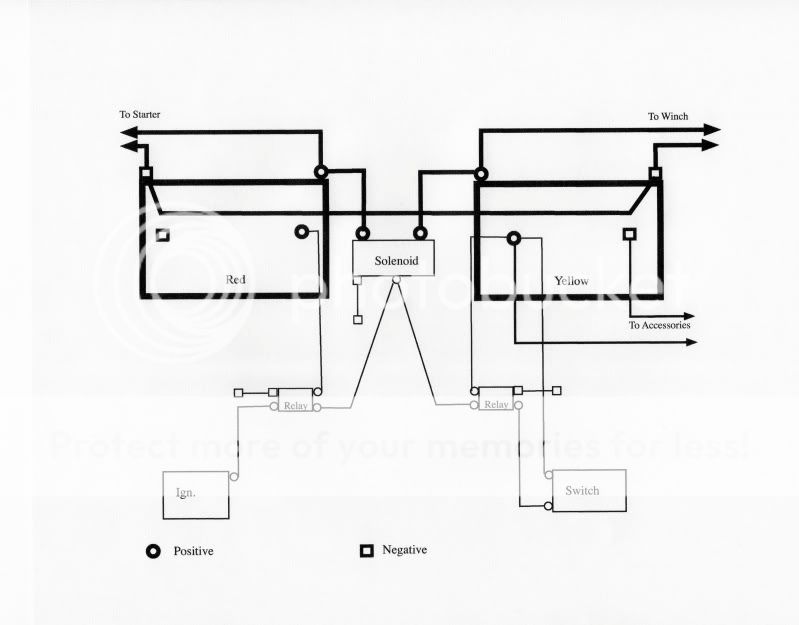redneckstylin
NAXJA Forum User
- Location
- prince george,BC,Canada
anybody got wiring diagrams on there dual alt setup........................or pics
dual alts!!!! what the f FOR?????anybody got wiring diagrams on there dual alt setup........................or pics
Fairly common on vehicles expecting high electrical loads - like late-model Ford ambulances (I think the primary is good for 160A, and the secondary for 140A or so...)
It's easy enough to do - just get a "one-wire" Delco CS-130 or CS-144 (whichever fits) for the second unit. The regulator pickup will be internal to the alternator - you literally have to hook up only one wire to make the thing work. Make sure you get at least 145* of belt wrap around the pully.
ok thank you for that info never new they existed ..........now could i just do the 2 wire application and have the battery wire and instead of ignition wire wire it to toggle? would that not work?
ill grab some pics of how my belt is routed with both alts in
my xj is a 88 so i do beleive it has the gm style alt on it looks pretty similar
1 more question 5-90 ...........how would you suggest running the 1 wire alt
a. dual batterys and dual alts with toggle switch so im not constantly chargeing that battery
b. single bat 2 alts where i have lots of charging happening on that 1 battery
c. go to beer store think through more
i run a 2x4 davemade linear with 1 136 amp nipindenso with two batts the amp draw is about 100 amps const. works i said why for cause there isnt much room in a xj for dual alts. also you might check out mean green alts they do one thats 200 amps i belive for the jeeps. o and as for a battery iso. i would wire a contant duty soliniod way cheaper and less complicatedanybody got wiring diagrams on there dual alt setup........................or pics
On the 1988 year XJ, I believe the alternator voltage is not controlled by the PCM. If that is true, then you would not have to worry about the PCM going into tantrums when two alternators are charging the same battery or battery bank.
However, I would not under any circumstance connect two alternators to the same battery. The difference in voltage however miniscule could cause one or both alternators to malfunction. Remember, wether or not the regulator is internal to the alternator or external, the voltage is regulated by what the alternator think the battery voltage is and adjust the output accordingly based on the regulator. If one alternator is regulated to 13.5 volt and the other to 13.8 volt, how would either of the two interpret what it is seeing?
I have never seen two alternators hooked to the same battery. To me, it is just good practice not to do that.
I would stay away from electronic isolators, solonoids and everything else that would connect both batteries together. Maybe a manual connect switch that you use only when one alternator is not working or if the starting battery is low and using it only long enough to get the engine going. I think that the only thing both batteries and the corresponding alternator should share is a common ground.
ok carry on with a little more detail please with the deep cycle and isolator running stuff of secondary while engine not running

